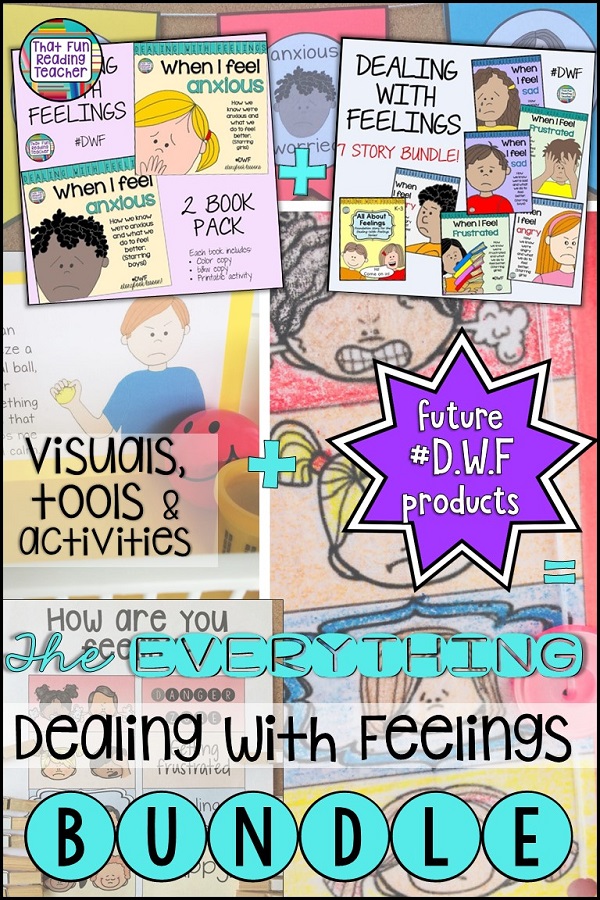Does dealing with issues related to social and emotional regulation long to just have time to teach? This is the first of two posts with tips about to help students with social and emotional regulation.
1 Start with communication…
and keep it simple! Think about planting a seed. Science, experience and faith tell us that growth is happening before real evidence is apparent. Building a foundation takes time. Praising positive efforts is well worth the effort!
2 Help students increase their comfort level with social and emotional language.
Many kids are not accustomed to talking about how they feel, or hearing others do so. Before any connection between social and emotional regulation, it is essential that our students feel comfortable to do so. An environment promoting kindness, friendship and teamwork is essential. A child who fears ridicule or criticism is unlikely to take the risk of trying something new.
Reading stories, watching videos or a play about characters experiencing a variety of feelings initiate discussions naturally. Conversation flows especially well because the language has been modeled.
3 Go cross-curricular.
This is particularly easy to do in language arts with all that can be done with stories (retell, relate, reflect), character discussions, story planning and more.
Let the arts imitate life
My kindergarten students were recently involved in a passion-filled discussion about birthdays and parties. The range of feelings spanned from excited and overjoyed to dejected and deeply hurt.
Arguments about who said what, and pronouncements of ended friendships flowed freely.
We talked about birthdays, and how different people feel about them, depending on their circumstances, and I sketched out the main feelings that were expressed:
I brought out the feelings puppets and asked them to show how they were feeling about the situation. Some used dry-erase markers on the color, laminated set, and others used the line-art copies to make paper-bag puppets to take home. (These and the cards below are a part of my Feelings Visuals Set and my Everything Feelings Big Bundle).
The students put on puppet shows from their own perspectives of the snack-time conversation that had caused so much upset. The little group that volunteered to be the audience laughed and lightened the mood during their show, and applauded at the end.
I then said to the puppeteers, “Wow, that was great. I wonder if you could trade puppets and do each other’s parts!”
Silence. Wide eyes. I assured them that I was confident any of them could imagine and play any part they could think of. They were free to choose any activity they wanted to.
I left them. They made a new birthday party show, with everyone included, all of them friends. They kept wearing the puppets they started with in the first place, but had changed their expressions. A dog joined the party.

Here is a part of ‘The birthday party’ puppet show, complete with the Happy Birthday song, and a shy birthday girl who felt embarrassed when her friends were singing to her.
4 Gently begin to make connections between feelings and responses to them.
I say gently, because just by saying the word ‘behavior’ or asking the wrong question can put even a four year old on the defensive.
How often have you heard someone ask a child why they have done something? I have heard myself do it (cringe), despite knowing that they do not know! It is a habit worth breaking. I still catch myself wondering aloud sometimes, but do catch myself by redirecting the conversation.
In my experience with children, providing and reinforcing positive options for dealing with tricky feelings has had the most success. The teacher-student relationship has to be one of trust, and the students have to be interested enough to engage with whatever material we present to them. Years ago I was looking for a way to help young kids make these connections by analogy (still wedged in my brain as a Reading Recovery strategy). Analogy (the RR way) helped students figure it out how to read and write more words on their own, based on prior knowledge.
I was learning about Social Stories at the time, but they weren’t exactly what I was looking for. I needed something between a social story and children’s picture book that would show (not tell!) connections between emotions and responses, and show an ‘any child‘ using different strategies to appropriate manage tricky feelings. I also needed something engaging! I keep these on our bookshelf with the other picture books, and read them once in a while to one or two children. By the time I am finished, there are generally five or six gathered around.

The Dealing-With-Feelings Stories are how I gently lead kids to make connections between feelings and responses. They relate to the characters, their responses, situations and language.
Once kids start to make these connections, they begin to understand that there are tools they can use to help themselves manage tricky, intense emotions.
Having some hope and faith that “I can manage myself” lays the groundwork for increased independence, social regulation and more curriculum!












Leave a Reply